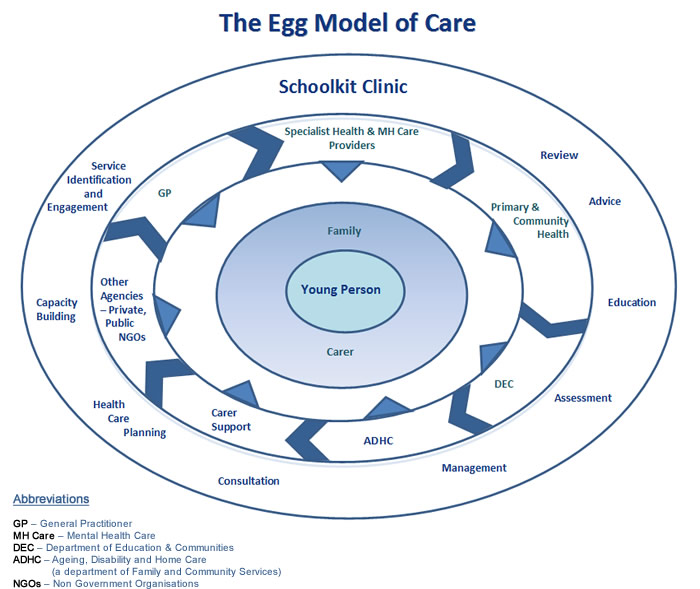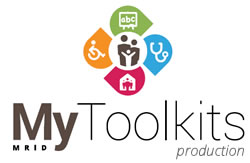The child and family are placed at the heart and centre of SchoolKit Clinics – all decisions revolve around them: their priorities, their resources, their abilities, their motivations, their aspirations, their needs.
The best way of conceptualising this way of working is the Egg Model. This model of care shows the variety of people and agencies potentially involved in caring for a young person. It also shows the multiple aspects of a young person’s life that need to be considered and taken into account at every stage.

A set of key features is critical to understanding the Egg Model and making it work:
- the young person is placed at the centre, along with the family or carer most closely involved with them and essential to their wellbeing;
- each contributing part (e.g. GP, ADHC, DEC) potentially has a distinct and separate role in providing specialist care for the child;
- all parts are critically related;
- when working together, the various parts can form a cohesive and supportive unit.
These principles are applied in SchoolKit Clinics as a reminder of the different approaches to consider in producing the best possible outcomes for each young person and their family.
Person and family-centred care is a core principle for the delivery of effective health strategies. It is health care that is respectful of, and responsive to, the preferences, needs and values of patients and consumers.
Central considerations for person-centred care are:
- respect,
- emotional support,
- physical comfort,
- information and communication,
- continuity and transition,
- care coordination,
- involvement of family and carers,
- access to care.
This model of care recognises an individual’s needs, their preferences are assessed, and a comprehensive care plan is developed. It involves interagency collaboration and integrated care, and often requires a lead care coordinator (often someone like a case manager). This approach is particularly necessary for young people with complex needs as caring for them means navigating an often fragmented service system.
- Australian Commission on Safety and Quality in Health Care (2011). Patient-centred care: Improving quality and safety through partnerships with patients and consumers. ACSQHC, Sydney.
- Ham C, Walsh N (2013). Making integrated care happen at scale and pace. Read more at The Kings Fund website.




